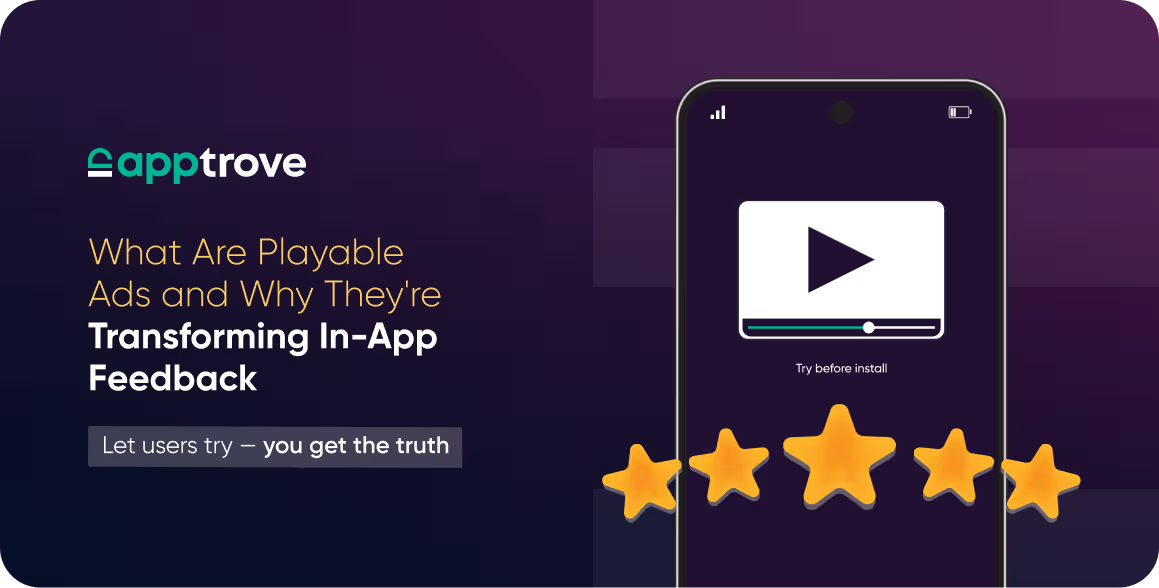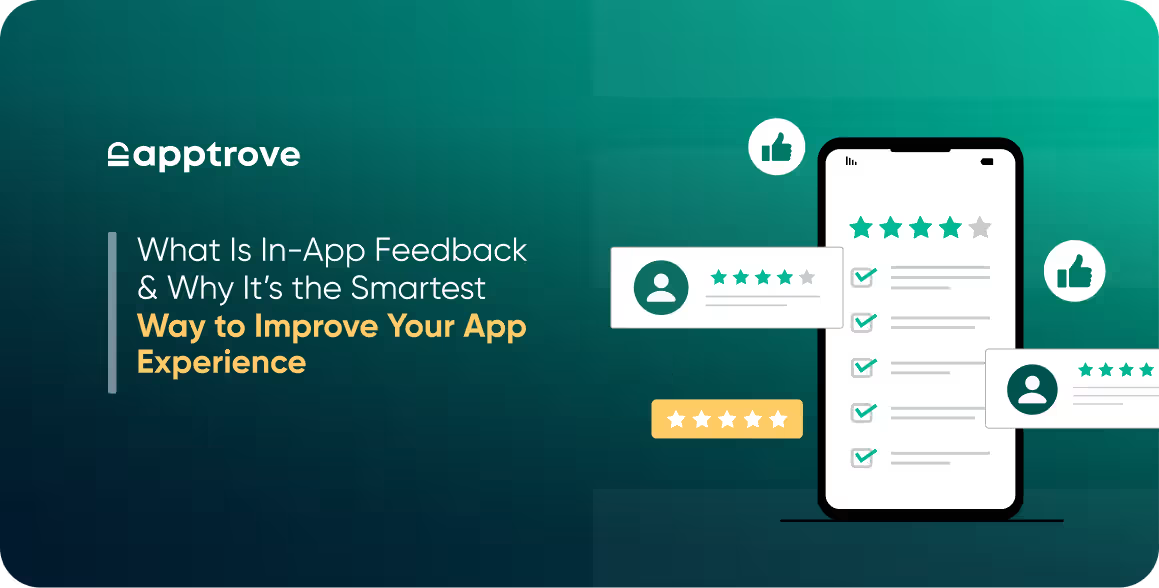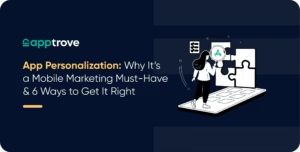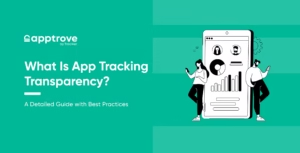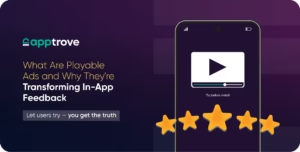Not all users behave the same. You will have some who open your app every day, some who only appear once on the weekend and others who churn after just a single interaction. Beam them the same message and it is no longer effective. What you need is a smarter way to group your users and that’s where audience segmentation examples become crucial.
So to give a statistic, which puts into perspective, 80% of the consumers are more willing to make a purchase when they can receive personalized experience by the brands. General messaging is no longer a pass. The competitive advantage app marketers require today is personalization with the use of segmentation.
Segmentation will enable you to visualize past the numbers. It is assisting you in segmenting your audiences into smaller viable groups that you can reach in reality. This blog explores the most effective examples, the benefits of audience segmentation, and how audience segmentation marketing can fuel app growth in today’s competitive space with Apptrove.
What is Audience Segmentation Marketing?
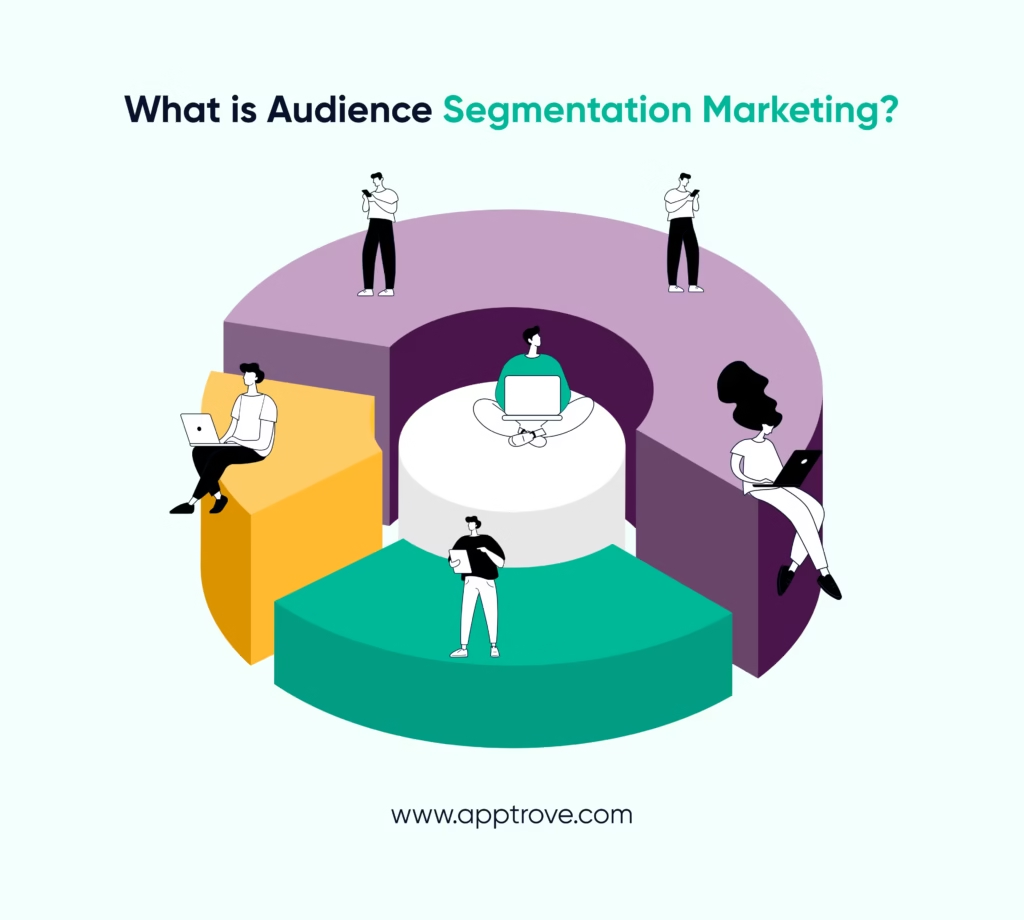
At its core, audience segmentation marketing is about precision. As opposed to thinking of your audience as one huge monolithic entity, you split the audience into smaller groups by using common attributes such as demographics, behaviour or preferences.
This way, your campaigns will not be generic and rather hyper-relevant. Considering such an example as the use of the push notification aimed at a fitness-oriented crowd of people, sending the same message to both a yoga-seeking customer and a weightlifting one simply does not pay off. Avoiding this mismatch is one of the uses of segmentation, as it allows you to deliver the correct message to the correct individual. It is the difference between broadcasting at the crowd and discussing a particular user.
Why Audience Segmentation is Essential
Marketers are typically overwhelmed by information, yet not sure of where to start. Segmentation helps us to understand clarity. Once you are fully acquainted with basic information on who your audience actually is, your strategies will become more precise and efficient.
The benefits of audience segmentation go far beyond marketing efficiency. It can enhance the experiences of the user, cut excessive advertisement spend, and develop higher levels of loyalty. Users do not only want applications, they want applications that are personal. Segmentation provides them what you give them properly.
This, in turn, is not the only benefit of app marketers. It is a survival nature in a busy ecosystem where individualization is the key to success.
Powerful Audience Segmentation Examples You Can Use
There are many ways to slice your audience data. Let’s walk through some of the most impactful audience segmentation examples, complete with practical use cases.
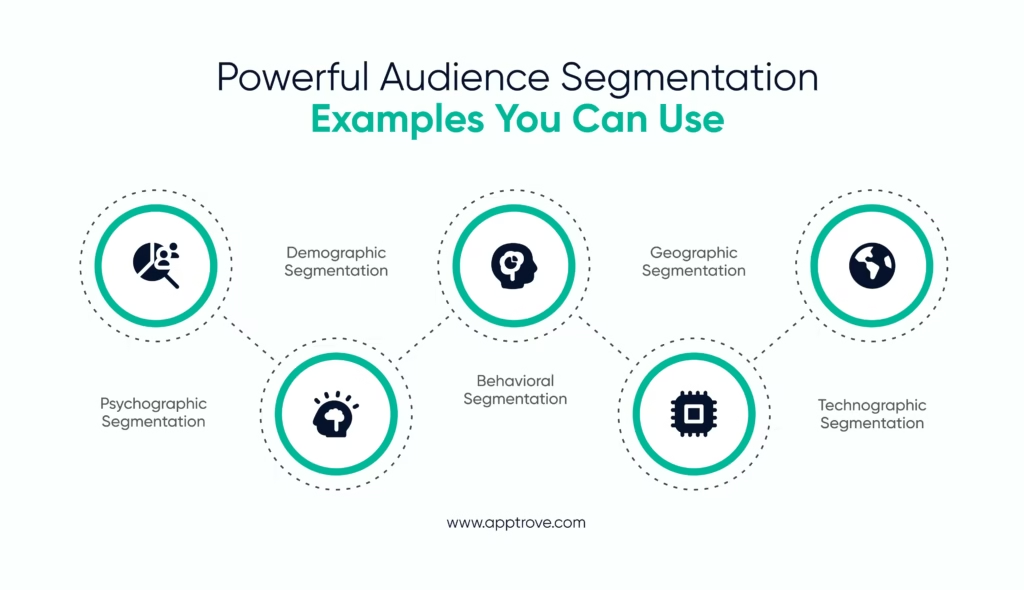
1. Demographic Segmentation
This is the most basic yet powerful form of target audience segmentation. In this case, you segment users by age, gender, level of income, education or occupation.
The example of a fintech application can consist of designing various campaigns based on a younger generation that is only beginning the financial journey and older generations who are planning their retirement. Likewise, premium courses can be sold through an e-learning program to individuals who have high-income levels and encourage scholarships among students.
Relevance is the most important benefit because you are customising your product and message to fit the stage of life and priorities of each of the groups.
2. Behavioral Segmentation
Among all audience segmentation examples, this one gives marketers the clearest path to conversions. Behavioral segmentation deals with how consumers use your app, such as their purchase history, the number of times they use the app and how they engage in notifications.
Consider streaming apps providing you with content suggestions based on the programs you have watched; abandoned cart alerts in the e-commerce sector. This kind of segmentation enables you to create campaigns that have a certain degree of responsiveness to the activity already undertaken by users.
Done correctly, behavioral data does not only allow you to know what users have been doing, it answers the question of what these users are most likely to do next.
And there is another statistic that cannot be ignored: McKinsey found that companies at a high level of personalization do have 40 percent more revenue on those activities than in the case of their competitors. This is the strength of behavior based insights in segmentation.
3. Geographic Segmentation
The behavior of where your users live tend to influence the way they behave audience segmentation examples based on geography leverage location data to create hyper-local experiences.
As another example, food delivery could emphasize breakfast offers to consumers in metropolitan locations during commute times, and late night snacking offers in college towns. Such segmentation can be applied by the travel apps to indicate the nearby destinations according to the city or country of the user.
The advantage is contextual relevance, i.e. the user feels that your app fits well in her surroundings and daily routine.
4. Psychographic Segmentation
Psychographics are more deep rooted than demographics They treat attitudes, values and motivations. This is one of the more advanced audience segmentation examples, but it creates strong emotional connections with users.
As an example, a meditation app: some people will want to use it because they need stress release, others because they desire quality sleep. By targeting your users on the basis of their mindsets, you will be able to provide personalized meditation regimes or sleep stories that will seem highly personal.
Psychographic segmentation entails being emphatic It causes users to feel understood as individuals, which builds trust and long-term interaction.
5. Technographic Segmentation
Technology use is another effective way to apply target audience segmentation. Not all users will use the same types of devices and operating systems and platforms and all users will not behave the same way.
A gaming app, as an example, could find iOS users spend more into the in-app purchases as compared to Android users whose behaviours tilt to the part of free-to-play functions. A SaaS platform would provide enhanced desktop capability to the professionals and keep mobile usage easy as the user-on-the-go.
This kind of segmentation will guarantee the best experiences of your app in any of the devices, and this makes the process of personalization less cumbersome.
The Benefits of Audience Segmentation in Action
When applied to real campaigns, these audience segmentation examples turn raw data into measurable results. You no longer waste money blindly on ads but instead develop campaigns, which are more focused, more efficient and more effective.
For marketers, the benefits of audience segmentation often appear in three big areas: engagement, conversion, and retention. Segmented users tend to react more to campaigns, make purchases and maintain usage of your app. Long-term this will lead to an increase in ROI and an increase in the lifetime value of each customer.
Segmentation, in other words, is not only a process of organizing users; it is the process of creating opportunities of growth.
How to Get Started with Target Audience Segmentation
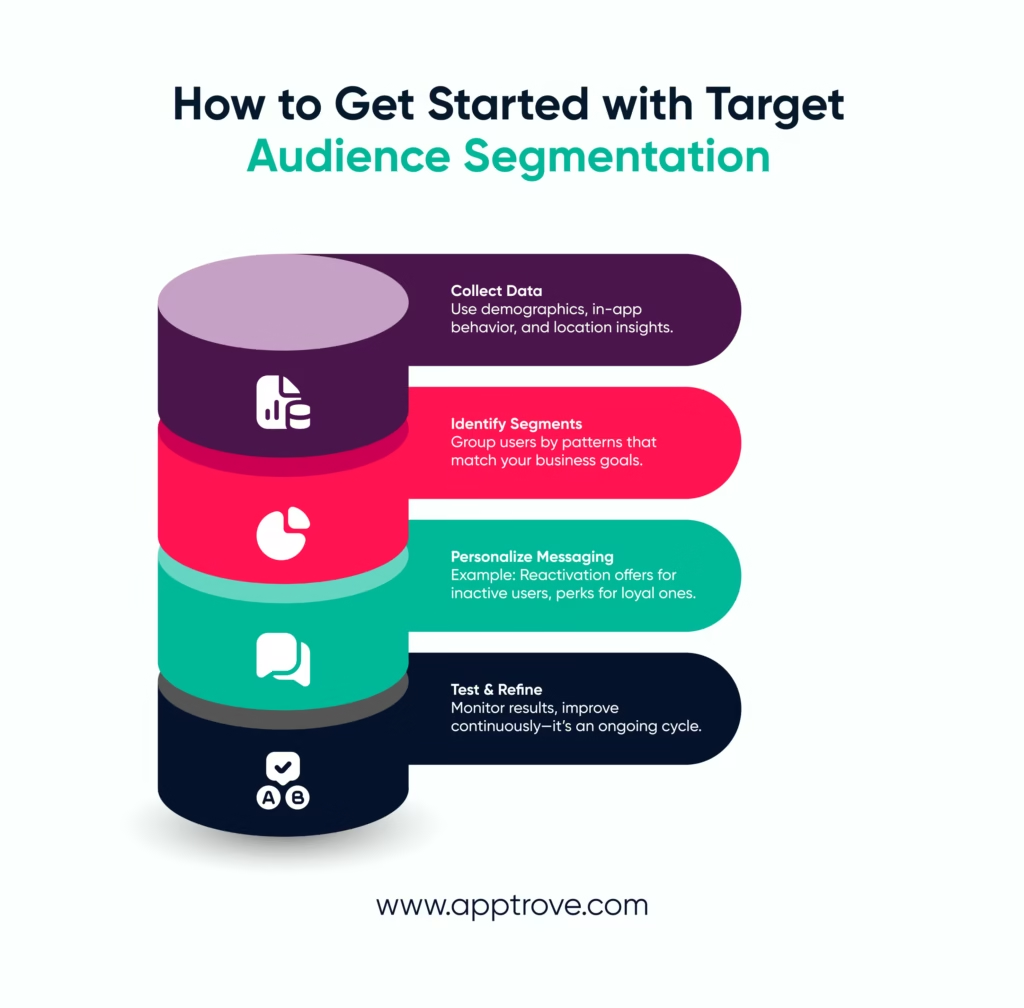
No need to be afraid, especially when it is a new thing to you. Implementing target audience segmentation doesn’t have to be overwhelming. It begins by collecting data [be it a demographic information, in-app behavior, location, etc], which is then aggregated in the data layer. Then find segments which match the business objectives of your app.
After segmentation of users, design a set of messages that are personalized according to segments. As a simple example, one might send reactivation campaigns to inactive users, and provide loyal users with special perks. Lastly, experiment with these plans, evaluate outcomes and optimize them on an ongoing basis. Segmentation is not a single project- it is an ongoing process of trial and refinement.
Common Pitfalls to Avoid
Even with the best audience segmentation examples, mistakes can happen. There is a big one: over-segmentation can leave one with more groups than one can handle. The other fallacy is using assumptions instead of facts, which in most cases goes in vain as campaigns do not hit the target.
Lastly, segmentation is viewed as something marketers do once As a result, most marketers end up with segmentations that reflect very little, or no data at all. In reality, audience segmentation marketing evolves as your users evolve. Making it dynamic makes your campaigns remain relevant in the long-run.
Final Thoughts
We’ve walked through five major audience segmentation examples; demographic, behavioral, geographic, psychographic, and technographic and explored how they fuel real growth. Along the way, we also looked at the benefits of audience segmentation and how to avoid common pitfalls.
What this means to app owners and marketers is quite simple: segmentation is no longer an option. It forms the basis of creating more effective, more customized campaigns that get results.
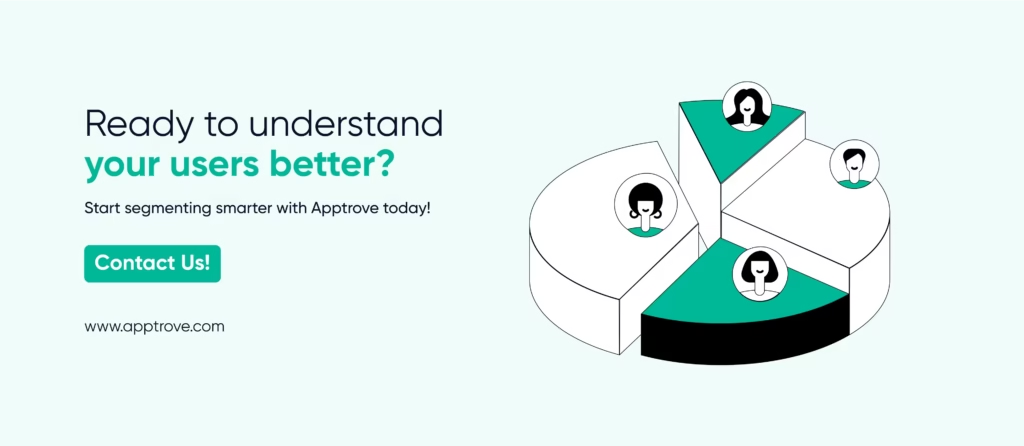
FAQs
1. What are audience segmentation examples in mobile marketing?
Audience segmentation examples are practical ways of grouping app users into smaller segments based on demographics, behavior, geography, psychographics, or technology use. These examples help marketers deliver personalized campaigns that drive engagement and conversions.
2. Why is audience segmentation important for app marketers?
Audience segmentation helps app marketers move beyond generic messaging. By tailoring campaigns to user needs and preferences, marketers boost engagement, improve ROI, reduce ad spend, and increase user retention.
3. How does behavioral segmentation improve app conversions?
Behavioral segmentation uses data like purchase history, in-app activity, and notifications engagement to predict user actions. This makes campaigns hyper-relevant, such as abandoned cart reminders or personalized content recommendations, leading to higher conversions.
4. What is the difference between demographic and psychographic segmentation?
Demographic segmentation categorizes users by measurable traits like age, gender, and income. Psychographic segmentation, on the other hand, goes deeper into values, motivations, and attitudes, helping apps build emotional connections and long-term loyalty.
5. What are common mistakes to avoid in audience segmentation?
Over-segmentation, relying on assumptions instead of real data, and treating segmentation as a one-time task are common pitfalls. Effective segmentation should be data-driven, manageable, and continuously optimized as user behavior evolves.

